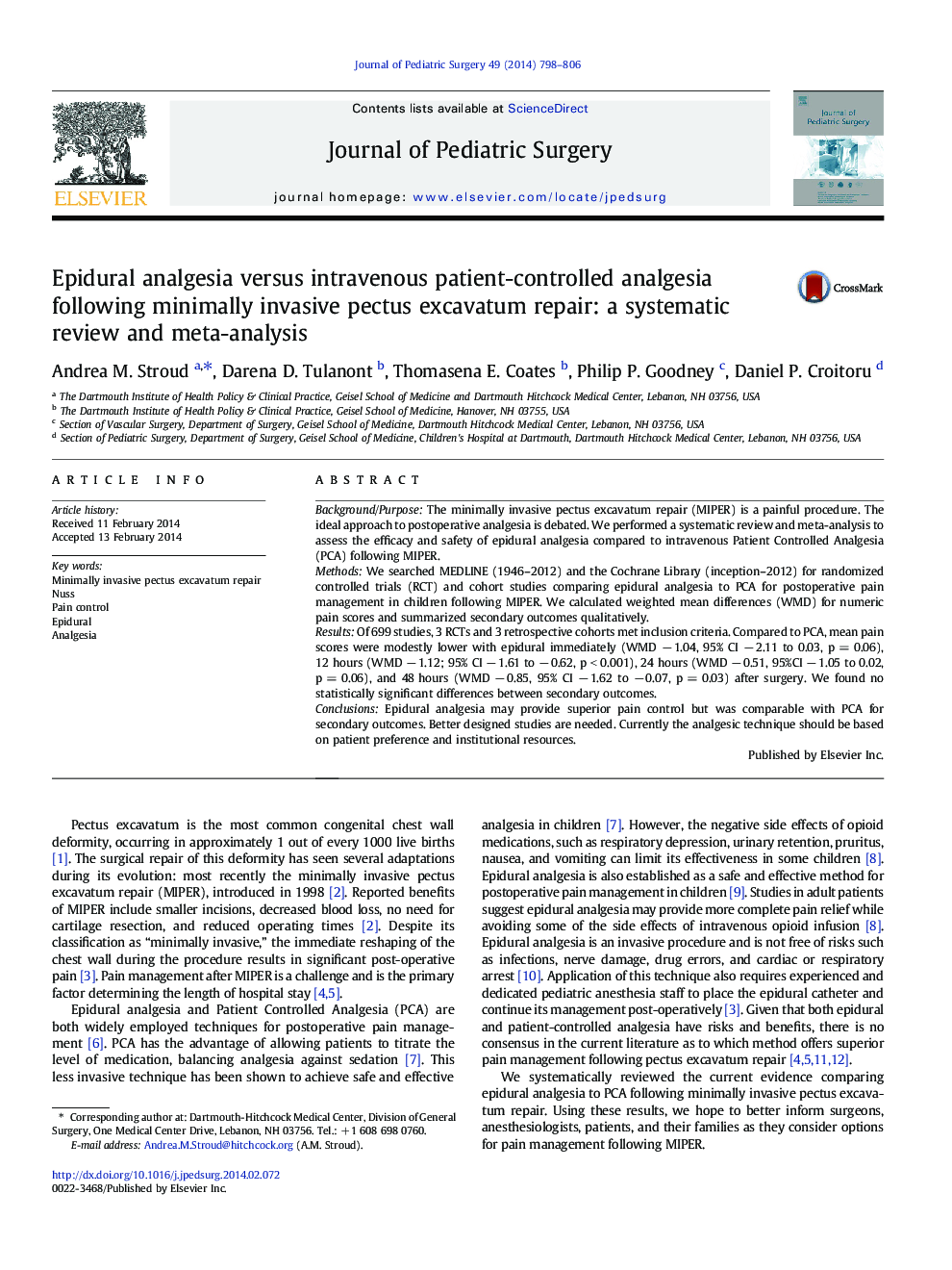| Article ID | Journal | Published Year | Pages | File Type |
|---|---|---|---|---|
| 4155744 | Journal of Pediatric Surgery | 2014 | 9 Pages |
Background/PurposeThe minimally invasive pectus excavatum repair (MIPER) is a painful procedure. The ideal approach to postoperative analgesia is debated. We performed a systematic review and meta-analysis to assess the efficacy and safety of epidural analgesia compared to intravenous Patient Controlled Analgesia (PCA) following MIPER.MethodsWe searched MEDLINE (1946–2012) and the Cochrane Library (inception–2012) for randomized controlled trials (RCT) and cohort studies comparing epidural analgesia to PCA for postoperative pain management in children following MIPER. We calculated weighted mean differences (WMD) for numeric pain scores and summarized secondary outcomes qualitatively.ResultsOf 699 studies, 3 RCTs and 3 retrospective cohorts met inclusion criteria. Compared to PCA, mean pain scores were modestly lower with epidural immediately (WMD − 1.04, 95% CI − 2.11 to 0.03, p = 0.06), 12 hours (WMD − 1.12; 95% CI − 1.61 to − 0.62, p < 0.001), 24 hours (WMD − 0.51, 95%CI − 1.05 to 0.02, p = 0.06), and 48 hours (WMD − 0.85, 95% CI − 1.62 to − 0.07, p = 0.03) after surgery. We found no statistically significant differences between secondary outcomes.ConclusionsEpidural analgesia may provide superior pain control but was comparable with PCA for secondary outcomes. Better designed studies are needed. Currently the analgesic technique should be based on patient preference and institutional resources.
